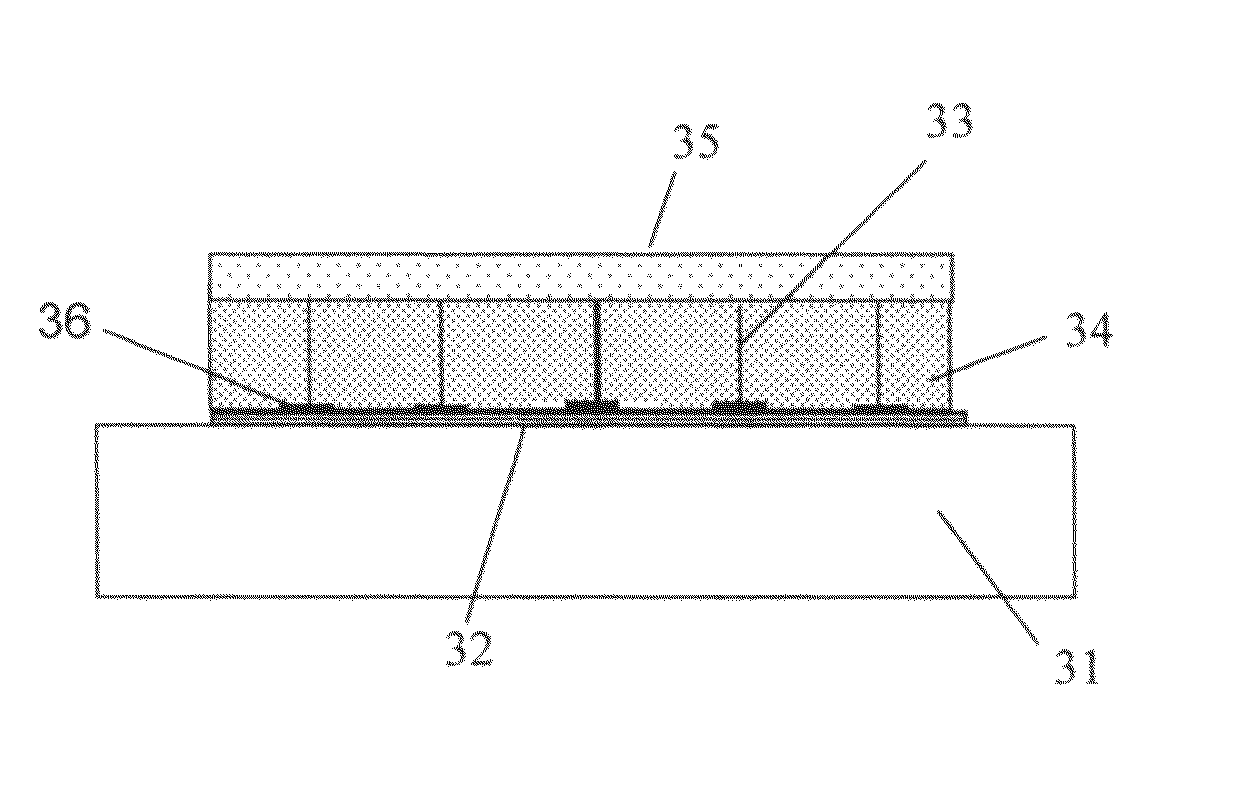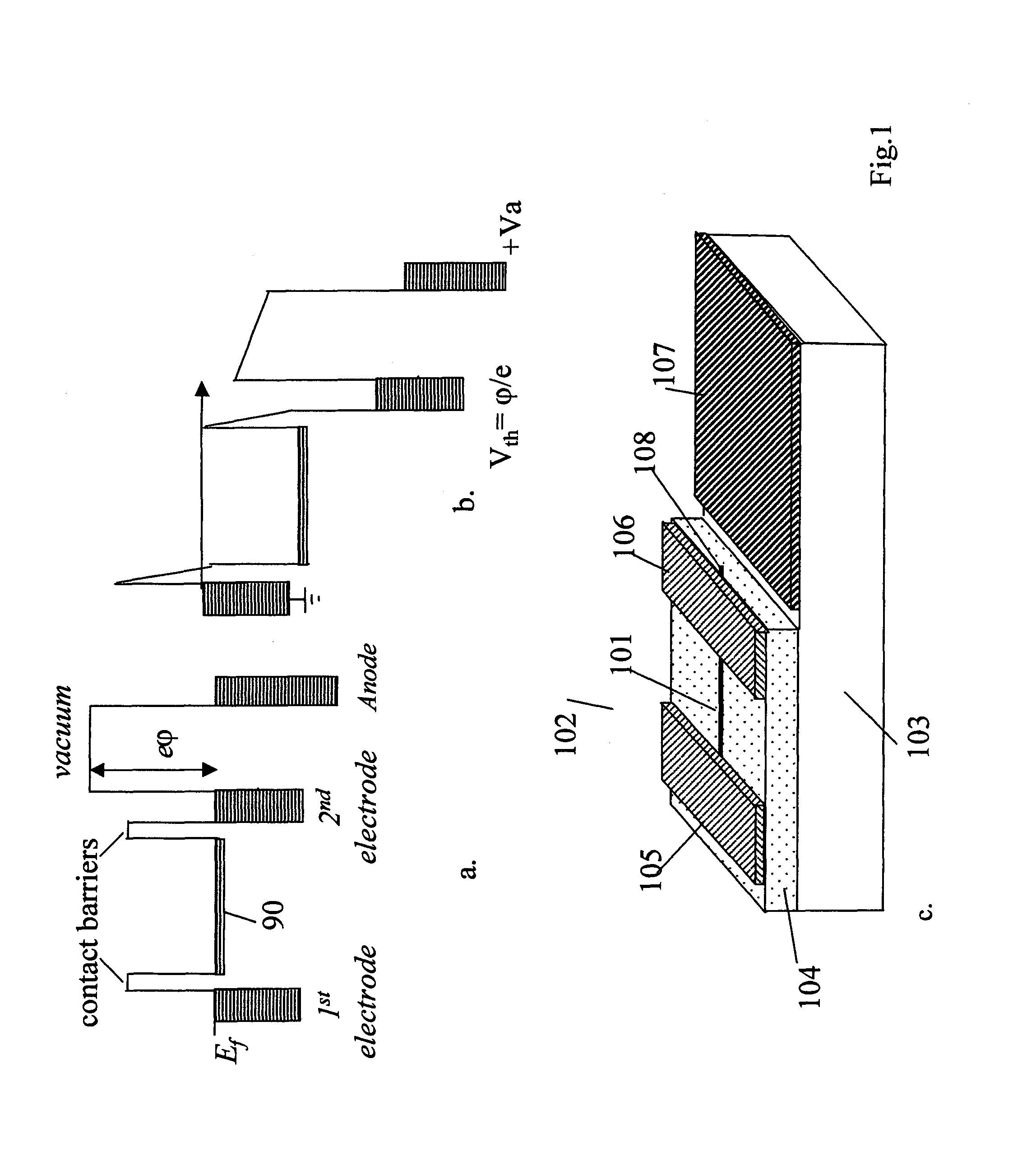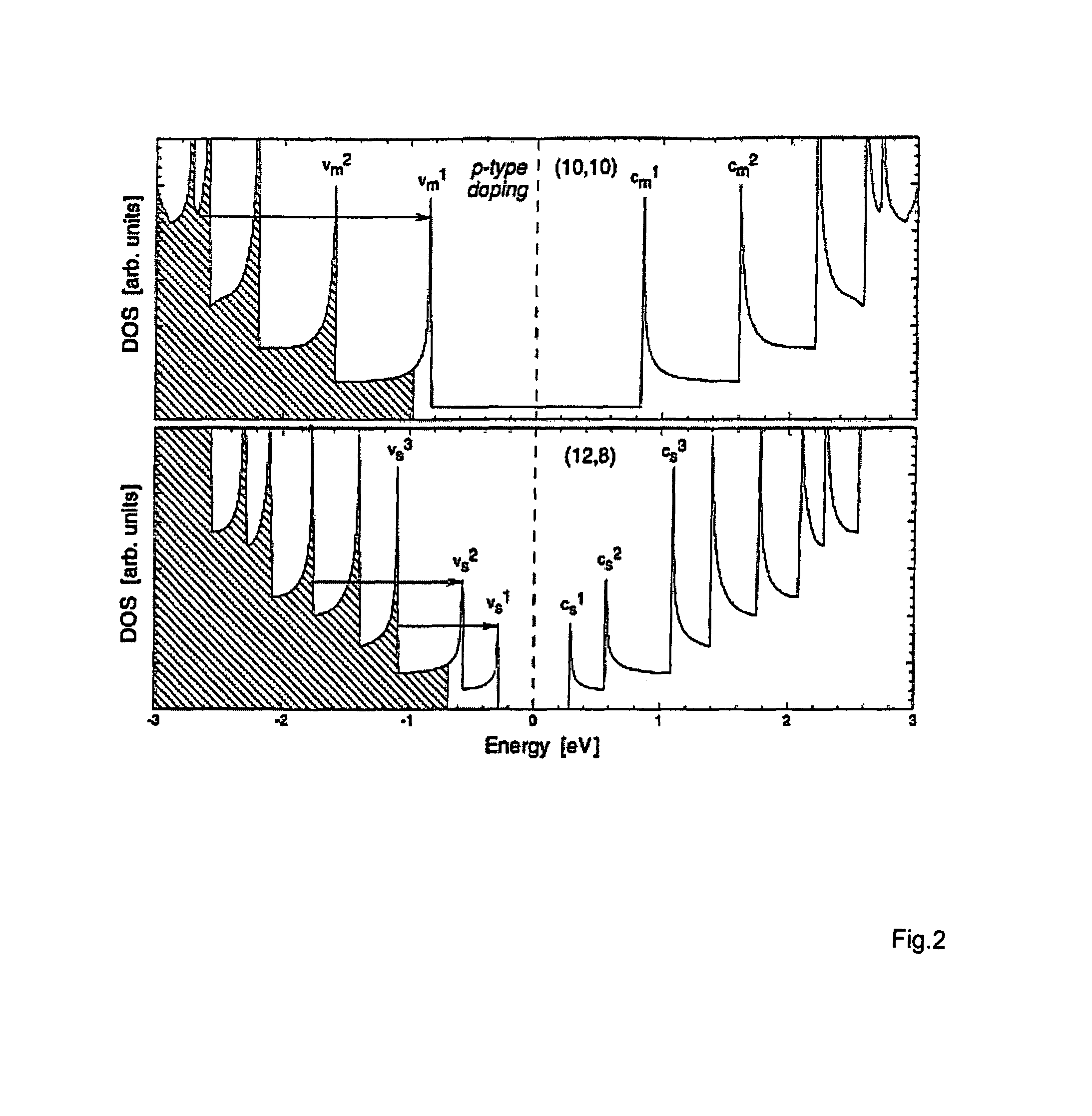Nanotube array ballistic light emitting devices
a technology of ballistic light and nanotubes, applied in the direction of discharge tube/lamp details, discharge tube luminescnet screens, semiconductor lasers, etc., can solve the problem of impracticality in device manufacturing, and achieve the effect of maximum energy separation and facilitate the growth of nanotube arrays
- Summary
- Abstract
- Description
- Claims
- Application Information
AI Technical Summary
Benefits of technology
Problems solved by technology
Method used
Image
Examples
Embodiment Construction
1. The BLED
[0019]FIG. 3 shows the cross-sectional view of the BLED structure. The device is made on the insulating substrate (glass) 31. The first metal layer 32 deposited on the substrate serves as a cathode electrode, on which the nanotube array will be grown. The layer 32 will also be used as a mirror to reflect light into upper hemisphere and hence should possess a high optical reflectivity, like Al. Furthermore, since the metal 32 is designed to be the output contact in the BLED, it is preferable to deposit pads of the Pd layer 36, see e.g. A. Javey et al, Nature, 424, 654, 2003, on the metal layer 32 to minimize the contact resistance. Before the nanotube growth, small pads of catalytic material (not shown), such as Ni, Fe or Co, are deposited on the Pd pads to activate the process of growth of the nanotube array 33. It is followed by depositing of an insulator 34, such as SiO2 or SiOx, having the thickness smaller than the nanotube height, and then polishing the top surface t...
PUM
 Login to View More
Login to View More Abstract
Description
Claims
Application Information
 Login to View More
Login to View More - R&D
- Intellectual Property
- Life Sciences
- Materials
- Tech Scout
- Unparalleled Data Quality
- Higher Quality Content
- 60% Fewer Hallucinations
Browse by: Latest US Patents, China's latest patents, Technical Efficacy Thesaurus, Application Domain, Technology Topic, Popular Technical Reports.
© 2025 PatSnap. All rights reserved.Legal|Privacy policy|Modern Slavery Act Transparency Statement|Sitemap|About US| Contact US: help@patsnap.com



